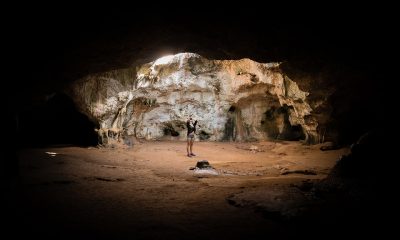Things To Do
Discover the Best Nightlife Hotspots in Milan

Discover the Best Nightlife Hotspots in Milan
In this article, we will explore some of the best nightlife hotspots in Milan, Italy. Milan is a vibrant city known for its fashion, art, and lively nightlife. Whether you’re looking for trendy clubs, cozy bars, or live music venues, Milan has something to offer for everyone. So, if you’re planning a trip to Milan and want to experience the city’s buzzing nightlife, read on to discover the best places to visit.
What are the popular clubs in Milan?
Milan is home to several renowned clubs that cater to diverse musical tastes and styles. One such club is the Armani/Privé, located within the Armani Hotel. This upscale club offers a sophisticated ambiance and hosts international DJs for an unforgettable night out. Another popular club is the Just Cavalli, known for its luxurious décor and high-energy dance floors. With its stunning outdoor terrace and stylish interiors, it’s a favorite among locals and tourists alike.
If you’re into electronic music, you can head to Amnesia Milano, a club that regularly hosts top DJs from around the world. The venue’s state-of-the-art sound system and impressive light shows ensure an immersive party experience. For those who prefer a more intimate setting, Plastic is a smaller club with a cozy atmosphere, playing a mix of house, EDM, and hip-hop music.
Where can I find the best bars in Milan?
When it comes to bars, Milan has no shortage of options for those seeking a more relaxed and laid-back evening. Navigli, a picturesque canal district, is renowned for its charming bars and cafes. Here, you can find a variety of watering holes, from traditional Italian wine bars to modern cocktail lounges.
Additionally, the Brera district is home to a plethora of trendy bars, often frequented by the city’s young and stylish crowd. Enjoy aperitivo, a popular Milanese tradition, at one of the many bars offering complimentary snacks with your drinks. For a taste of the city’s classic charm, visit the historic Bar Basso, famous for its signature cocktail, the Negroni Sbagliato.
Are there any live music venues worth visiting?
If you’re a music enthusiast, Milan has a vibrant live music scene that caters to various genres and preferences. Blue Note Milano is a renowned jazz club that has hosted legendary musicians and continues to showcase top-notch jazz performances. The venue offers an intimate setting and an excellent lineup of artists from around the world.
For those who enjoy indie and alternative music, the Circolo Magnolia is a must-visit. Situated in the Idroscalo Park, this open-air venue hosts concerts and events, making it a popular spot for music lovers. Keep an eye on their event calendar for upcoming shows and festivals.
What are some tips for enjoying the nightlife in Milan?
When exploring Milan’s nightlife, it’s essential to familiarize yourself with the city’s transportation options. The Metro system, along with buses and trams, provides convenient access to various nightlife hotspots. Additionally, be mindful of dress codes, especially when visiting upscale clubs and lounges. Many venues require smart casual attire, so it’s best to dress to impress.
It’s also worth noting that the nightlife in Milan typically starts late, with many clubs and bars opening after 10 pm and continuing well into the early hours of the morning. Embrace the laid-back Italian lifestyle and take your time to savor the vibrant and diverse nightlife offerings that Milan has to offer.
Conclusion
Overall, Milan’s nightlife scene caters to a wide range of tastes and preferences, from high-energy clubs and trendy bars to intimate live music venues. Whether you’re seeking a glamorous night out or a more relaxed evening, Milan has something for everyone. So, while visiting this iconic city, be sure to immerse yourself in the vibrant and diverse nightlife culture.
FAQs
Q: Is Milan safe at night?
A: Milan is generally considered safe at night, especially in popular tourist areas and busy nightlife districts. However, it’s important to exercise caution and be aware of your surroundings, as with any major city.
Q: What is the legal drinking age in Milan?
A: The legal drinking age in Milan, and all of Italy, is 18. Visitors should be prepared to show identification when purchasing alcohol or entering venues that serve alcoholic beverages.
Q: Are there any cultural norms or customs to be aware of when enjoying the nightlife in Milan?
A: In Milan, it’s common to participate in the “aperitivo” tradition, where bars offer complimentary snacks with the purchase of a drink during designated evening hours. It’s also customary to tip bartenders and waitstaff, though not required.
Q: How do I navigate the public transportation system in Milan at night?
A: Milan’s Metro system, buses, and trams provide late-night service, making it convenient to travel between nightlife hotspots. It’s recommended to familiarize yourself with the city’s transportation options and schedules to ensure a smooth and safe journey.
Q: Can I expect English to be spoken in Milan’s nightlife hotspots?
A: While English is widely spoken in tourist areas and international venues, it’s helpful to have some basic Italian phrases and expressions handy, especially when venturing into more local and off-the-beaten-path establishments.
Things To Do
Investigation reveals reasons behind Tybee Island’s brown water

Description: This article delves into the investigation that reveals the reasons behind Tybee Island’s brown water. From the sources of pollution to the impact on tourism, we uncover the factors contributing to this issue and explore potential solutions.
What is causing Tybee Island’s brown water?
One of the primary reasons behind Tybee Island’s brown water is pollution. The island is susceptible to runoff from surrounding areas, carrying sediment, chemicals, and pollutants into the water. Additionally, sewage leaks and stormwater drainage can further contaminate the water, leading to discoloration and reduced water quality.
Another contributing factor is erosion along the coastlines. As the shores erode, sediment is stirred up and deposited into the water, causing the brown hue that has become a common sight on Tybee Island.
How does the brown water affect tourism?
The presence of brown water on Tybee Island can significantly impact tourism. Tourists are often deterred by discolored water, as it can be perceived as dirty or polluted. This can lead to a decrease in visitors, impacting the local economy and businesses that rely on tourism for revenue.
Furthermore, the brown water can affect recreational activities such as swimming, fishing, and boating. Tourists may be hesitant to engage in water-based activities due to concerns about water quality, further impacting the tourism industry on Tybee Island.
What efforts are being made to address the issue?
Local authorities and environmental groups are actively working to address the issue of brown water on Tybee Island. Measures such as stormwater management, erosion control, and wastewater treatment upgrades are being implemented to reduce pollution and improve water quality.
Community clean-up events are also being organized to remove debris and trash from the beaches and water sources, helping to prevent further pollution and sedimentation.
How can visitors help protect Tybee Island’s water quality?
Visitors can play a crucial role in protecting Tybee Island’s water quality by practicing responsible tourism. This includes properly disposing of trash, using eco-friendly products, and supporting sustainable tourism initiatives.
Additionally, visitors can participate in beach clean-up events and educate themselves about the impact of pollution on water quality, helping to raise awareness and promote conservation efforts on the island.
Conclusion
Investigating the reasons behind Tybee Island’s brown water has shed light on the environmental issues plaguing this coastal destination. By addressing pollution, erosion, and other contributing factors, we can work towards restoring the clarity and health of Tybee Island’s waters for both residents and visitors to enjoy.
FAQs
Q: Is the brown water on Tybee Island safe to swim in?
A: While the brown water may not always be aesthetically pleasing, it is generally safe for swimming. However, it is advisable to check water quality reports and heed any advisories before entering the water.
Q: How can I report pollution or water quality concerns on Tybee Island?
A: You can contact local authorities, such as the Environmental Protection Division or the Coastal Resources Division, to report any pollution or water quality concerns on Tybee Island.
Q: Are there any ongoing initiatives to improve water quality on Tybee Island?
A: Yes, there are several ongoing initiatives to improve water quality on Tybee Island, including stormwater management projects, erosion control measures, and community clean-up events.
Q: How can I support conservation efforts on Tybee Island?
A: Visitors can support conservation efforts on Tybee Island by participating in beach clean-up events, using eco-friendly products, and promoting sustainable tourism practices.
Q: What role do local businesses play in addressing water quality issues on Tybee Island?
A: Local businesses can play a significant role in addressing water quality issues on Tybee Island by implementing sustainable practices, supporting conservation initiatives, and promoting environmental awareness among customers and employees.
Things To Do
The Distance Between Monterey and Sacramento: Exploring the Journey

In this article, we will discuss the various aspects of the journey between Monterey and Sacramento, including the distance, modes of transportation, and points of interest along the way. Whether you are planning a road trip, train ride, or flight between these two California cities, this guide will help you navigate the journey with ease.
How far is the distance between Monterey and Sacramento?
The distance between Monterey and Sacramento is approximately 150 miles by car. The most common route to travel between the two cities is by taking Highway 101 North to Highway 156 East, which eventually connects to Highway 99 North. This scenic drive typically takes around 2.5 to 3 hours, depending on traffic conditions.
Alternatively, you can also take a direct flight from Monterey Regional Airport to Sacramento International Airport, which takes approximately 1 hour and 15 minutes. Another option is to take the Amtrak train, which offers a relaxing and scenic journey that takes around 4 to 5 hours.
What are some points of interest along the way?
As you travel from Monterey to Sacramento, there are several points of interest worth exploring. Just outside of Monterey, you can visit the scenic town of Carmel-by-the-Sea, known for its charming streets, art galleries, and beautiful beaches. Further along the drive, you can stop at the historic town of San Juan Bautista, home to the iconic Mission San Juan Bautista.
On your way to Sacramento, you can also make a detour to the bustling city of San Jose, known for its technology hub and vibrant cultural scene. Once you reach Sacramento, be sure to visit the State Capitol building, Old Sacramento, and the Crocker Art Museum for a taste of the city’s history and culture.
What are the different modes of transportation available?
There are several modes of transportation available for traveling between Monterey and Sacramento. If you prefer to drive, you can take your own car or rent a vehicle for the journey. The drive is relatively straightforward and offers stunning views of the California landscape.
If you prefer to fly, you can book a direct flight from Monterey Regional Airport to Sacramento International Airport. This is a quick and convenient option for those looking to minimize travel time. If you prefer a more leisurely journey, you can also take the Amtrak train, which offers comfortable seating and scenic views along the way.
Can I take a day trip from Monterey to Sacramento?
While it is theoretically possible to take a day trip from Monterey to Sacramento, it may be challenging to fully explore all the points of interest in both cities in just one day. If you are short on time, consider focusing on specific attractions or neighborhoods in Sacramento, such as the State Capitol building or Old Sacramento.
Alternatively, you can plan your trip in advance to maximize your time and prioritize the sights you most want to see. Be sure to check the opening hours of attractions and plan your itinerary accordingly to make the most of your day trip between Monterey and Sacramento.
Is it worth stopping along the way during the journey?
Yes, it is definitely worth stopping along the way during the journey from Monterey to Sacramento. There are several charming towns, scenic viewpoints, and cultural attractions that make for enjoyable pit stops along the route. Whether you want to stretch your legs, grab a bite to eat, or take in the sights, there are plenty of opportunities to break up your journey and explore the surrounding area.
Be sure to research points of interest along the route and plan your stops in advance to make the most of your travel experience. Whether you choose to visit a historic site, enjoy a meal at a local restaurant, or simply take in the scenery, taking the time to explore along the way can enhance your journey between Monterey and Sacramento.
Conclusion
In conclusion, the journey between Monterey and Sacramento offers a variety of transportation options, points of interest, and opportunities for exploration. Whether you prefer to drive, fly, or take the train, there are convenient and scenic ways to travel between these two California cities. By planning your trip in advance and making the most of your journey, you can enjoy a memorable and enriching travel experience.
FAQs
1. How long does it take to drive from Monterey to Sacramento?
The drive from Monterey to Sacramento typically takes around 2.5 to 3 hours, depending on traffic conditions.
2. Are there direct flights from Monterey to Sacramento?
Yes, you can book a direct flight from Monterey Regional Airport to Sacramento International Airport, which takes approximately 1 hour and 15 minutes.
3. Can I take the Amtrak train from Monterey to Sacramento?
Yes, the Amtrak train offers a scenic and leisurely journey from Monterey to Sacramento, which takes around 4 to 5 hours.
4. What are some recommended stops along the way from Monterey to Sacramento?
Recommended stops along the way include Carmel-by-the-Sea, San Juan Bautista, and San Jose, each offering unique attractions and experiences.
5. Is it possible to take a day trip from Monterey to Sacramento?
While it is possible to take a day trip, it may be challenging to fully explore both cities in just one day. Consider prioritizing specific attractions and planning your itinerary in advance for a successful day trip.
Things To Do
Exploring the History and Architecture of the Stairs in St Paul’s Cathedral

Explore the history and architecture of the stairs in St Paul’s Cathedral in this article. Discover the significance and design of these unique staircases that have played a crucial role in the cathedral’s history.
What is the significance of the stairs in St Paul’s Cathedral?
The stairs in St Paul’s Cathedral have a long and rich history dating back to the cathedral’s construction in the 17th century. They not only serve as a functional element for accessing different levels of the building but also hold symbolic importance. The stairs have been used for important ceremonies, processions, and events throughout the centuries.
The intricately designed stairs also highlight the craftsmanship and architectural prowess of the time. They showcase various styles and materials used in their construction, reflecting the evolving trends in architecture over the centuries.
How are the stairs designed in St Paul’s Cathedral?
The stairs in St Paul’s Cathedral are designed with a mix of traditional and contemporary elements. The intricate carvings, ornate railings, and grandeur of the staircases reflect the cathedral’s iconic architecture. The stairs are not only functional but also serve as a visual centerpiece, adding to the overall aesthetic appeal of the cathedral.
Each staircase in St Paul’s Cathedral is unique in its design, reflecting the different periods of construction and renovation. From the grand main staircase to the smaller spiral staircases, each one tells a story of the cathedral’s history and architectural evolution.
What materials are used in the construction of the stairs in St Paul’s Cathedral?
The stairs in St Paul’s Cathedral are built using a variety of materials, including stone, marble, and wood. The choice of materials reflects the architectural style of the time and the durability required for heavy foot traffic. Stone is often used for the grand main staircases, while marble and wood are used for decorative elements and railings.
The use of these materials not only adds to the visual appeal of the stairs but also ensures their longevity and structural integrity. The craftsmanship and attention to detail in the construction of the stairs highlight the skill and expertise of the architects and builders involved in creating St Paul’s Cathedral.
How have the stairs in St Paul’s Cathedral been preserved over the years?
Preserving the stairs in St Paul’s Cathedral is a meticulous process that requires ongoing maintenance and restoration. The cathedral’s preservation team works tirelessly to ensure the stairs remain in pristine condition, despite the wear and tear of centuries of use.
Regular cleaning, repairs, and conservation efforts are carried out to protect the stairs from damage and deterioration. The use of modern techniques and materials helps to maintain the historical integrity of the stairs while ensuring they are safe for visitors to use and admire.
What can visitors learn from exploring the stairs in St Paul’s Cathedral?
Exploring the stairs in St Paul’s Cathedral offers visitors a unique insight into the history and architecture of this iconic building. By studying the design, materials, and craftsmanship of the stairs, visitors can gain a deeper appreciation for the cathedral’s rich heritage and cultural significance.
Visitors can also learn about the role of the stairs in the daily life of the cathedral, from facilitating worship services to providing access to hidden chambers and spaces. The stairs serve as a tangible link to the past, connecting visitors to the generations of pilgrims and worshippers who have climbed them over the centuries.
Conclusion
The stairs in St Paul’s Cathedral are not just functional elements but symbolic and architectural masterpieces that embody the history and craftsmanship of the cathedral. Exploring these stairs offers a glimpse into the past and a deeper appreciation for the significance of this iconic building.
FAQs
Can visitors climb the stairs in St Paul’s Cathedral?
Yes, visitors are welcome to climb the stairs in St Paul’s Cathedral and explore the different levels of the building. However, some areas may be restricted for safety reasons or during special events.
Are guided tours available to learn more about the stairs in St Paul’s Cathedral?
Yes, guided tours are available for visitors who want to learn more about the history and architecture of the stairs in St Paul’s Cathedral. Knowledgeable guides can provide insights into the design, materials, and significance of the stairs.
Are the stairs accessible to visitors with mobility issues?
St Paul’s Cathedral is equipped with facilities to accommodate visitors with mobility issues, including ramps and elevators for accessibility. Some areas may be challenging to access due to the historical nature of the building, but efforts are made to ensure all visitors can enjoy the cathedral.
Do the stairs in St Paul’s Cathedral have any hidden chambers or spaces?
Yes, the stairs in St Paul’s Cathedral lead to various chambers and spaces that are not typically accessible to the public. These hidden areas hold historical significance and are sometimes used for special events or ceremonies.
Can visitors take photographs of the stairs in St Paul’s Cathedral?
Photography is allowed in most areas of St Paul’s Cathedral, including the stairs. However, there may be restrictions in certain areas or during specific events, so visitors are advised to check with cathedral staff before taking photographs.

 Beaches6 years ago
Beaches6 years agoThe Pillars of A Wonderful Historical past – Madurai’s Thirumalai Naicker Mahal

 Travel FAQs10 months ago
Travel FAQs10 months agoDecoding La Scala: The Unspoken Dress Code of Milan’s Most Prestigious Opera House

 Travel FAQs10 months ago
Travel FAQs10 months agoUnderstanding Tax Recovery Charges and Fees: What You Need to Know

 Beaches6 years ago
Beaches6 years ago33 Puts to Discuss with in Ratnagiri

 Things To Do10 months ago
Things To Do10 months agoExplore the Hidden Gems of Menominee, MI: A Local’s Guide to the Best Activities

 Things To Do10 months ago
Things To Do10 months agoThe Ultimate Guide to Getting to Atrani: Transportation Tips and Tricks

 Travel FAQs10 months ago
Travel FAQs10 months agoThe Ultimate Guide for a Scenic Drive from Palm Springs to Las Vegas

 Beaches10 months ago
Beaches10 months agoMiami vs. Miami Beach: Understanding the Key Differences

































